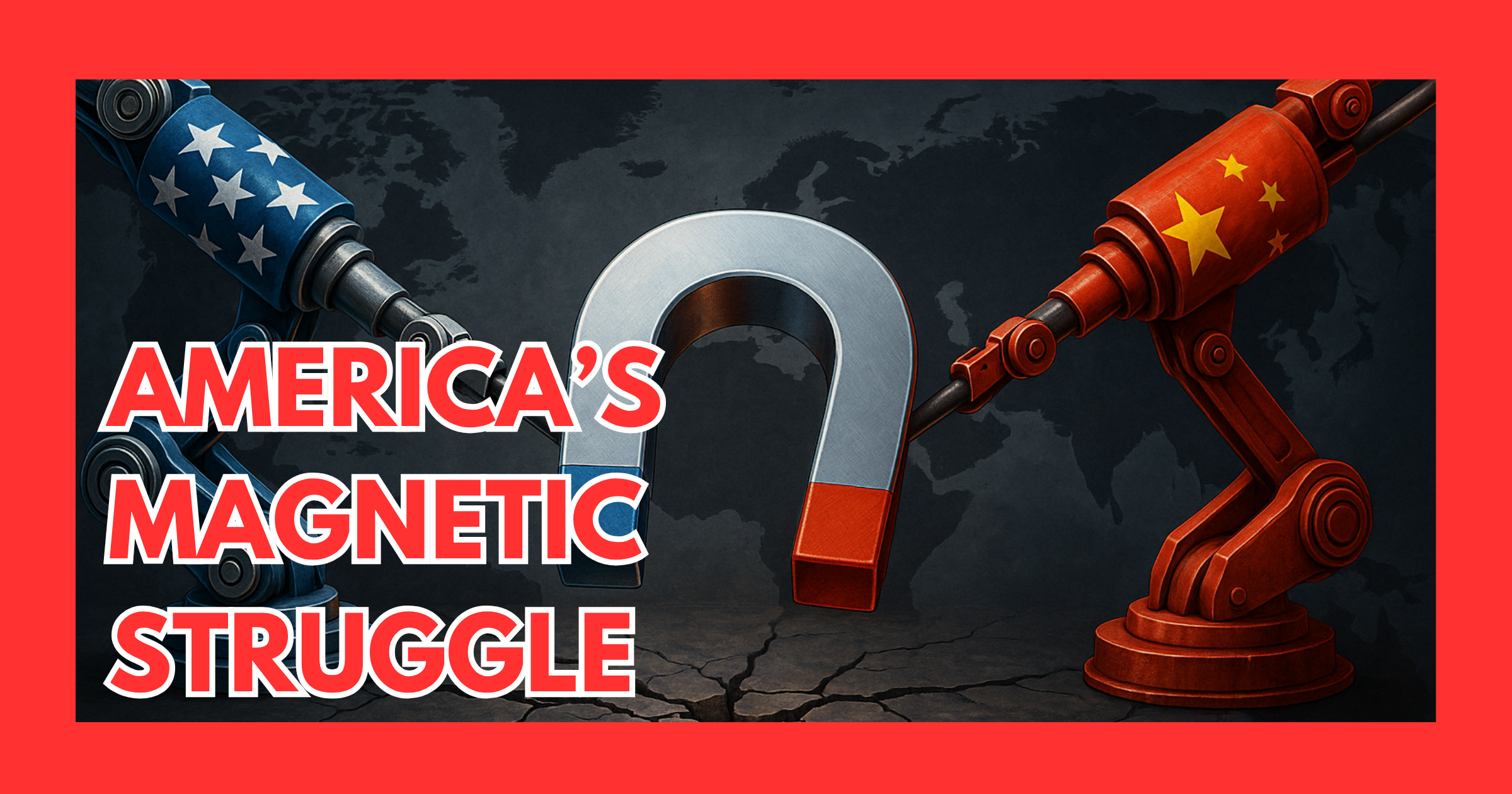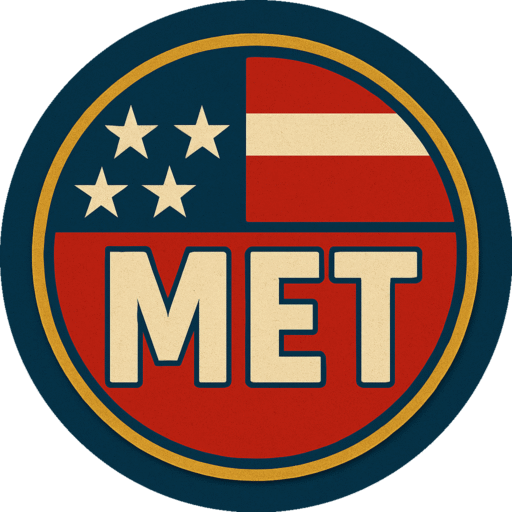
Weaponized Magnets: The Quiet Power Struggle with China
They’re in your phone, your earbuds, your car, your power grid, and your fighter jets.
by Met Middleson
June 3, 2025
The most powerful magnets in the world fit in your hand, but they carry the weight of global power. These are rare earth magnets. You’ll find them in smartphones, electric vehicles, drones, and missile guidance systems. Over 90 percent are made in China.
WHAT ARE RARE EARTH MAGNETS?
Rare earth magnets are unmatched in strength. They make small motors more efficient, speakers louder, and navigation systems more precise. No other material delivers the same performance in such a compact package.
These magnets depend on a handful of obscure minerals. They’re not especially rare, but turning them into something usable is messy, expensive, and tough on the environment. Most countries backed off. China didn’t.
HOW THEY’RE MADE AND WHY THAT MATTERS
Making these magnets takes a lot more than just digging up rocks. It starts with mining huge amounts of ore, then isolating the small amounts of usable material inside. That process involves powerful acids, high heat, and complex chemical steps. What comes out is useful. What’s left behind is toxic waste, radioactive sludge, and mountains of polluted byproduct. This is one of the dirtiest supply chains in modern industry, and one of the most difficult to clean up.
China decided it was worth the mess. While other countries pulled back from rare earth production, China kept going. It didn’t just invest in mining. It built refineries, smelters, factories, and shipping routes to control every step from raw rock to finished product. That control now stretches across most of the world’s supply. Even MP Materials, the largest rare earth producer in the United States, sends its mined ore to China to be refined. The reason is simple. America doesn’t have the full system in place. There aren’t enough trained workers, processing plants, or streamlined permits to handle it here. So the raw material leaves the country, and the finished magnets come back with a made-in-China label. MP Materials, based in Las Vegas, supplies around 15 percent of global rare earth demand but still depends on China to turn that supply into finished parts.
CHINA’S ADVANTAGE AND AMERICA’S RISK
China does not just export rare earths. It controls the entire process from digging them out of the ground to shaping them into finished magnets. These magnets are inside American fighter jets, missile guidance systems, naval radar, and satellites. They are not optional parts. There is no easy substitute. If China decides to cut off the supply, production would not just slow down. It would stop.
Defense contractors in the United States still depend on Chinese-made components to build some of the most advanced military systems in the world. There is no reserve of magnets set aside for emergencies. There is no backup supplier on American soil ready to fill the gap. For more than a decade, military planners and government researchers have warned that this is a national security risk. Efforts to rebuild the supply chain have been slow, blocked by complicated regulations, limited budgets, and a lack of long-term planning. The issue has been passed from one administration to the next, but never fully solved.
TRUMP’S GREENLAND MOVE
When Donald Trump first floated the idea of buying Greenland in 2019, it sounded like a punchline. He brought it up again in late 2024, and it was mocked just as quickly. Most people treated it as a real estate stunt. But there was a deeper motive. Greenland holds some of the richest rare earth deposits on the planet. The Trump team understood the stakes. With China tightening its grip on global supply chains, gaining access to those minerals would have given the United States a powerful edge. It was not about land. It was about leverage.
Southern Greenland’s Kvanefjeld site holds exactly the materials needed to make high-performance magnets. By the time Trump revisited the idea in 2024, Chinese companies were already there. Through joint ventures and long-term agreements, they had secured influence over one of the most valuable undeveloped rare earth sources in the world. The United States was late, and the project soon stalled under pressure from environmental groups and public opposition. Still, the episode exposed something important. The next global fight over resources is not about oil. It is about minerals most people have never heard of, buried in remote places that suddenly matter a lot.
CAN THE UNITED STATES CLOSE THE GAP?
The United States has the raw materials. Mines like Mountain Pass in California sit on top of valuable rare earth deposits. But having the minerals is only the first step. What comes next is harder. Refining the materials, turning them into magnets, and building them into advanced technology all require a system that is still missing.
There are signs of progress. MP Materials is building a plant to make magnets here in the United States. Urban Mining Co. is recovering rare earths from recycled electronics. These efforts matter, but they are not enough on their own. The country still does not have the scale, the skilled workforce, or the coordination needed to match what China has built. In his second term, Donald Trump has renewed calls for domestic production of critical minerals and announced new funding to support rare earth research and processing. But the gap is still wide. Until the United States can build the full system from mining to finished product, it will continue to rely on its biggest competitor for the materials that keep the economy running and the military ready.
Rare earth magnets are easy to overlook. They are small, silent, and hidden inside the devices we rely on every day. But they are also essential. Without them, engines stall, weapons fail, and critical systems stop working. Right now, the most advanced economy on Earth depends on its primary competitor for the materials that make it run. This is not just about trade. It is about power, and who holds it.



